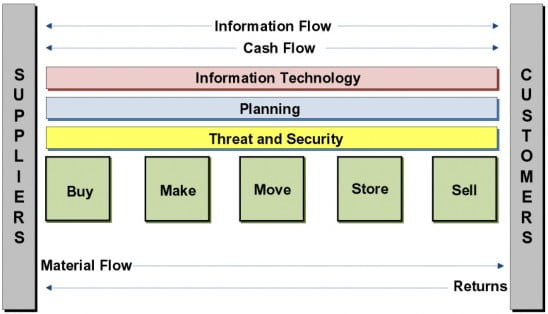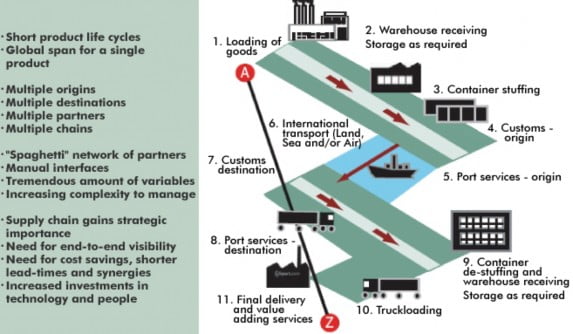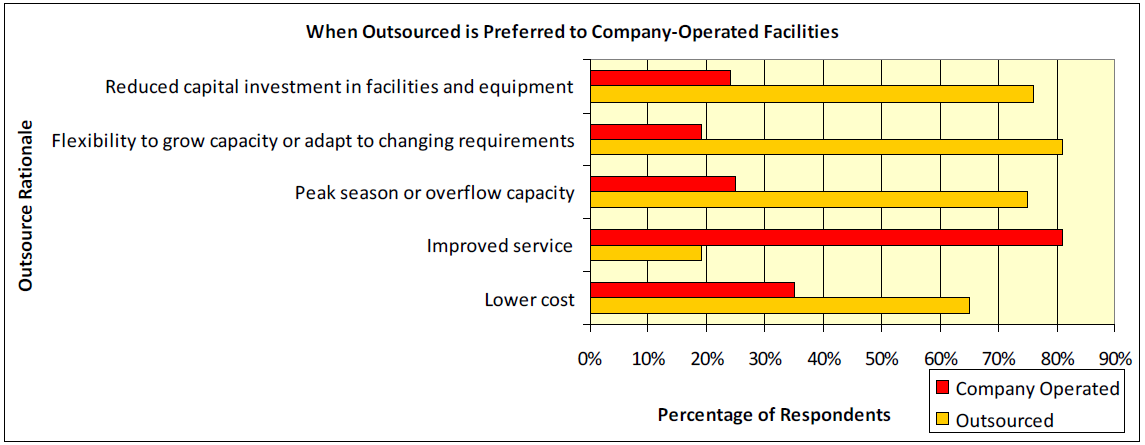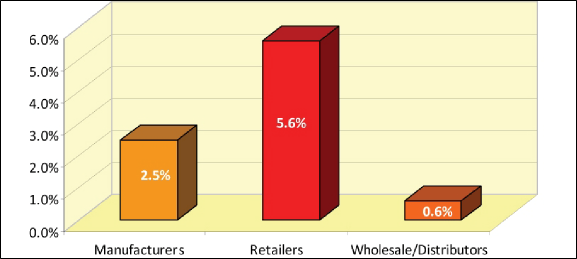Applying Smart Actions to Reduce Operations Costs
Gene Tyndall, Tompkins Associates
March 2009
www.tompkinsinc.com
Introduction
The severity of the global recession is creating extraordinary uncertainty among business executives across all industries and geographies. One objective, however, is certain for all: the need to squeeze more cash out of operations. The cash conversion efficiency (CCE) measure is receiving more attention today than ever, as executive agendas are focused on increasing cash flows as well as cost and expense reductions across the enterprise.
Chief Financial Officers (CFOs) are well versed and skilled in helping to reduce expenses, extend payables, examine working capital, and apply financial and cash management strategies that seek to speed up cash flows and increase cash reserves.
When it comes to reducing operating costs, however, many companies “dust off” the methods that are always employed in economic downturns and apply them. These methods usually include staff layoffs and downsizing across the board. The recent unprecedented amount of jobless claims would indicate that these cuts are not only across the board, but perhaps, overboard. Furthermore, the usual strategies – such as hiring freezes, travel curtailing, cutting discretionary expenses, and others – generally seek to achieve 10-15 percent cost reductions by department.
Beyond these common cost-cutting strategies, however, we see far too few agendas focused on the details and depths of costs of goods sold (COGS). Such opportunities exist within the supply chains of every company regardless of its industry, size, and geographic scale. Despite the fact that supply chains have increasingly gained executive suite attention in recent years, most executives still view them as fragmented, disconnected processes that deal with freight and warehousing. Consequently, cost reduction programs only scratch the surface and focus on obvious factors, such as fuel prices, freight rates, and shipping productivity.
Some even believe that operational excellence has diminished as a competitive differentiator, as many large companies report financial success and growth resulting from enterprise-wide supply chain initiatives. Cutting waste and delivering products and services faster and more efficiently than the competition is certainly not a new idea.
The fact is that supply chains encompass more than 70 percent of the COGS, but they typically represent a mere 20 percent of the cost management agenda. As a reminder, supply chains are comprised of links from supplier’s supplier to customer’s customer. These include the mega processes of BUY-MAKE-MOVE- STORE-SELL, with flows of information and cash as well as materials and products (Figure 1).

Figure 1: Supply Chain Mega Processes (Source: Tompkins Associates)
There are many processes and practices within the supply chain mega processes that create inventories, deliver customer services, and provide for the logistics of product flow. Add to this the locations of production and logistics facilities, the sourcing of products and components, and the assets involved, and it is easy to see where the 70-plus percent of costs emanate from.
The operations costs inherent in supply chains do not always show up as such on the income and expense statements, or balance sheets, but they do exist. Freight and warehousing are only parts of the total – procurement, packaging, inventories, information technology, administration, returning goods, and service centers must also be accounted for, just to call out a few. We do know, of course, that all these are included in the COGS, and thus contribute substantially to operating margins.
Why, then, are so many cost drivers ignored in cost reduction agendas? The simple facts are that supply chains are complex, related terminologies have become overly technical, and many companies lack the analytical skills or tools to drill into and control the true cost drivers.
Where to Start? Rethink Your Operation’s Objectives and Excellence
No better time exists than during a recession to challenge mindsets about operations. This may well mean tailoring the business to focus on the new world realities. Clearly, many key questions need to be addressed in order to get executive minds focused on the importance of operations and supply chains to their business. We pose seven of these key questions:
-
What businesses are we in? Why?
-
What is our business model?
-
Is this business model viable in today’s economic situation? Why? Where?
-
Who and where are our customers, really? Will they continue to buy our products and services? Why?
-
How do we compare to our competition?
-
Is our organization and culture enabling or hindering our strategies? How do we know?
-
How do we describe our supply chains? How well do they enable our strategies? How do we know? What are our inherent risks and unknowns?
Considering and evaluating these questions often sets the framework for change, for transformation, and for renewed awareness about operations and supply chains.
Next, Work Toward the Three Big Goals
The business operations self-review should set up the strategic agenda that will drive the business through these recessionary times. Certainly these times require prioritization, tight agendas, and vigilant monitoring of key measures. If executed effectively, strategies that align with these three questions will yield major results:
-
How can we become more efficient, leaner, and more productive without hurting our future opportunities for growth?
-
How do we determine, and then focus on, the right initiatives to improve our operations today and ongoing?
-
How can we ensure that we come out of the recession stronger?
Note that strategies aligned with these three issues balance efficiency, operations excellence, and operations improvement. Cutting expenses for the sake of cutting is not a strategy but a tactic for conserving cash. We should really seek cost reductions and make selected investments inherent to these three goals.
Now, Go After Cost Reductions in Smart Ways
Overall Supply Chains
As companies have gone global, so of course have their supply chains, adding unexpected costs, increased time, and risks to deliver products to end customers. Whether the company sources globally or distributes to emerging markets, or both, its supply chains are longer, more complex, and more subjected to unanticipated costs.
Certain cost buckets are impacted more than others by basic supply chain decisions. While some of these take longer to materialize, most have inherent near-term cost reduction opportunities that transcend the supply chain. The most significant are:
-
Inventories – Inventory ownership, and thus working capital, exists in three forms: (a) purchased materials, components, parts; (b) work-in-process; and (c) finished goods. Any situation other than the right inventories, in the right places, in the right amounts, and at the right times, presents a cost reduction opportunity.
Inventories are created by forecasts, which are always subject to error (Figure 2). Moreover, our surveys have shown that 70 percent of companies increase their number of stock keeping units (SKUs) at an average of 9 percent annually. Clearly, SKU proliferation often expands inventories to high levels that complicate inventory controls even further. With detailed knowledge and the right tools, inventories can be reduced anywhere from 10-40 percent, producing dramatic gains in working capital and free cash flow.
Forecast Accuracy Metrics (Leading Accuracy Measures)
Forecasting Methods
Consortium Average Accuracy
Accuracy Response Range
Leading Industry Segments
Percentage Error
29%
280%
F&B Manufacturing, Personal Care Manufacturing, and Electronics
Mean Absolute Percentage Error (MAPE)
39%
690%
F&B Manufacturing, Grocery, Retail, and Electronics
Figure 2: Forecast Error Measurement
(Source: Supply Chain Consortium, Tompkins Associates) -
Total Delivered Cost – Many companies now have the data to measure the total landed costs of goods. This measure is based on the costs of freight, duties, taxes, and logistics from the source to the company destination.
However, when we wrote the guidelines for the National Association of Accountants on “Managing the Total Costs of Global Supply Chains,” we pointed out that the key measure is total delivered cost, which captures all the costs that go into the product for it to reach its point of purchase at end customers. This measure is far more important, as it should be used to determine pricing and thus margins.
Further, it presents many opportunities for cost reduction. Some of the international cost categories are cited in the Figure 3.

Figure 3: International Supply Chains (Source: DHL)
-
The Supply Chain Network – The locations of production and logistics facilities and their respective missions add costs to the business in multiple categories. Fixed capital, operations, taxes, leasing expense, selling general and administrative expense (SG&A), and others are driven by the network. While rationalizing the global network may require several months to complete, near- term savings potential can be found:
-
Within the operations at each facility
-
In the routing of product flows between facilities
-
In the ownership and operational management of the facilities through outsourcing or contract manufacturing alternatives
-
-
Logistics Outsourcing – The logistics service provider (LSP) industry has grown rapidly throughout the past 10 years, and most companies engage in some logistics outsourcing. Implemented effectively, outsourcing can reduce costs dramatically and remove assets (as well as liabilities) from the balance sheet (Figure 4).
Further, it also provides the potential for continuous improvement in cost management. Service level agreements (SLA) commonly dictate cost reductions enabled by close, collaboratively working relationships between the client and the service provider. These gains are derived from continuous improvement programs geared toward efficiency and productivity gains.
When Outsourced is Preferred to CompanyOperated Facilities

Figure 4: Why Companies Outsource
(Source: Supply Chain Consortium, Tompkins Associates) -
Supply Chain Technologies – While often thought of as a longer term cost reduction method, there are near-term savings potentials through rapid implementations, better use of existing technologies, and greater alignment of the technology enablers to operations. It is estimated that only 50 percent of the capabilities of many supply chain applications are actually applied in analyzing and solving problems.
These are the “Big 5” cost reduction opportunities that transcend the supply chain. Each has significant potential for cost savings.
The Supply Chain Mega Processes
Substantial cost reduction potential also exists within each of the mega processes identified in Figure 1. Deep knowledge and powerful tools can uncover hidden cost drivers and the saving opportunities within each. Here are some examples:
-
BUY – Procurement, sourcing, or purchasing, is a major cost category for any business. How items are procured, the procurement sources, and the purchase volume can add up to 80 percent or more of the COGS.
By rationalizing sources, organizing buying teams, collaborating with suppliers, streamlining the procurement processes, and simplifying purchase transactions, savings up to 10-20 percent can be achieved. For most businesses, this is a huge cost reduction which flows directly to the bottom line.
-
MAKE – Manufacturing and production, often considered lean and efficient, can still provide cost reduction opportunities beyond the obvious. Plant layouts, operational policies, production planning processes, just-in-time methods, supplier managed inventories, increased throughput, and quality assurance are examples.
Converting to contract manufacturers can save substantial operating costs. Better managing energy costs can produce important savings as well. Upgrading technology, which often requires substantial capital investments, can stabilize and/or lower operational costs long term by minimizing the impact of rising labor and associated costs, especially health care.
-
MOVE – The total cost of freight paid by a company is often understated. These costs are oft times buried in the purchased materials price, hidden in department budgets, or incurred by multiple suppliers and trading partners, yet paid ultimately by the business. Once the total spend is defined, knowledge and smart tools can be applied to reduce all transport costs, whether domestic or international, from 5-20 percent. Again, a substantial recovery for most companies.
Another category that is gaining increasing prevalence is found in customs duties, tariffs, and taxes. In-depth knowledge of the policies and regulations of trading countries is critical to managing and reducing these costs.
-
STORE – Costs incurred from distribution operations have been ignored as markets were growing. Storage and order shipping costs has been the primary focus. Unproductive labor, material usage, equipment performance and utilization, space utilization, and other costs associated with the storage of goods adds up as the number of distribution centers, and corresponding sizes, have expanded. Again, knowledge and smart tools can save from 10-30 percent of these costs.
-
SELL – The delivery of the right products to points of purchase in the right quantities at the right time and with efficiency and speed is a major differentiator for any company in a competitive market. As demonstrated in Figure 5, stock-outs are a serious problem for some industries. Reducing stock- outs has both cost and revenue impacts.

Figure 5: Stock-Out Percentages
(Source: Supply Chain Consortium, Tompkins Associates)Further, call centers, customer service policies, product-service bundles, and product returns, have proliferated as sales have grown. Several of these areas contain cost drivers that do not make a difference to buyers or customers, and these can be sorted out and reduced. Frequently overlooked is the invoicing process with in this mega process. Collections and customer service perception is directly tied to the accuracy of invoices.
All options for cost reductions within the supply chain processes need to be evaluated against the overall performance objectives of the supply chain. Reducing the cost in one area may raise the cost in another. For example, reducing inventories may increase the costs of freight, as more shipments may be required to fulfill the needs or increase the number of stock-outs. Thus, it is important for those who are leading any deep cost reduction initiatives to understand the repercussions on the overall supply chain, and thus the total delivered costs of each product or family.
Conclusion
A well respected business leader, Larry Bossidy, was once quoted as saying, “Many people regard execution as detailed work that is beneath the dignity of a business leader. To the contrary, it’s a leader’s most important job.” In these recessionary and uncertain times, this most important job has taken on added significance. Achieving operations cost reductions in smart ways is difficult and challenging. Yet, it is far more beneficial and a stronger contributor to profitability than are the most common methods employed.
Coming out of the recession stronger is a worthy goal for every company, and the right mix of operating efficiencies, customer satisfaction methods, and innovations will lead the way. If the new business strategies include operational excellence – as they surely should – then operational efficiencies, and the smart cost reductions that yield them, are the right answers.
CFOs can play an important leadership role in driving true operations cost reductions. They are in the best position to lead and insist on true measures and accurate quantifications of the cost drivers of each supply chain. Additionally, they can help operations executives and managers better understand the financial impacts of operations and supply chain decisions, and they can coach operations managers on the interrelationships that drive COGS.
CFOs can help further by seeing things as they are, not as they want them to be. Executive agendas should contain not only cost reduction initiatives, but the right ways to get real efficiencies and improved financial results that impact the entire supply chain, not just a singular process or function.
Innovative, practical solutions that improve your supply chain performance and produce value-based results
Gene Tyndall is Executive Vice President for Global Supply Chain Services with Tompkins Associates, Inc., a leading supply chain operations services firm. He was formerly President, Ryder Global Logistics and a Senior Partner with Ernst & Young, where he helped grow and lead the global supply chain management consulting practice. He is the co-author of “Supercharging Supply Chains,” and three other books on supply chains and finance. He is the author of NAA Guidelines for “Managing the Costs of Global Supply Chains,” as well as the “Cost Management of Logistics, Transportation, and Warehousing.”
Tompkins Associates designs and integrates global end-to-end solutions for companies that embrace supply chain excellence. For more than 30 years, Tompkins has evolved with the marketplace to become the leading provider of global supply chain services, distribution operations consulting, technology implementation, material handling integration, and benchmarking and best practices. The company is headquartered in Raleigh, NC. For more information, visit www.tompkinsinc.com.


